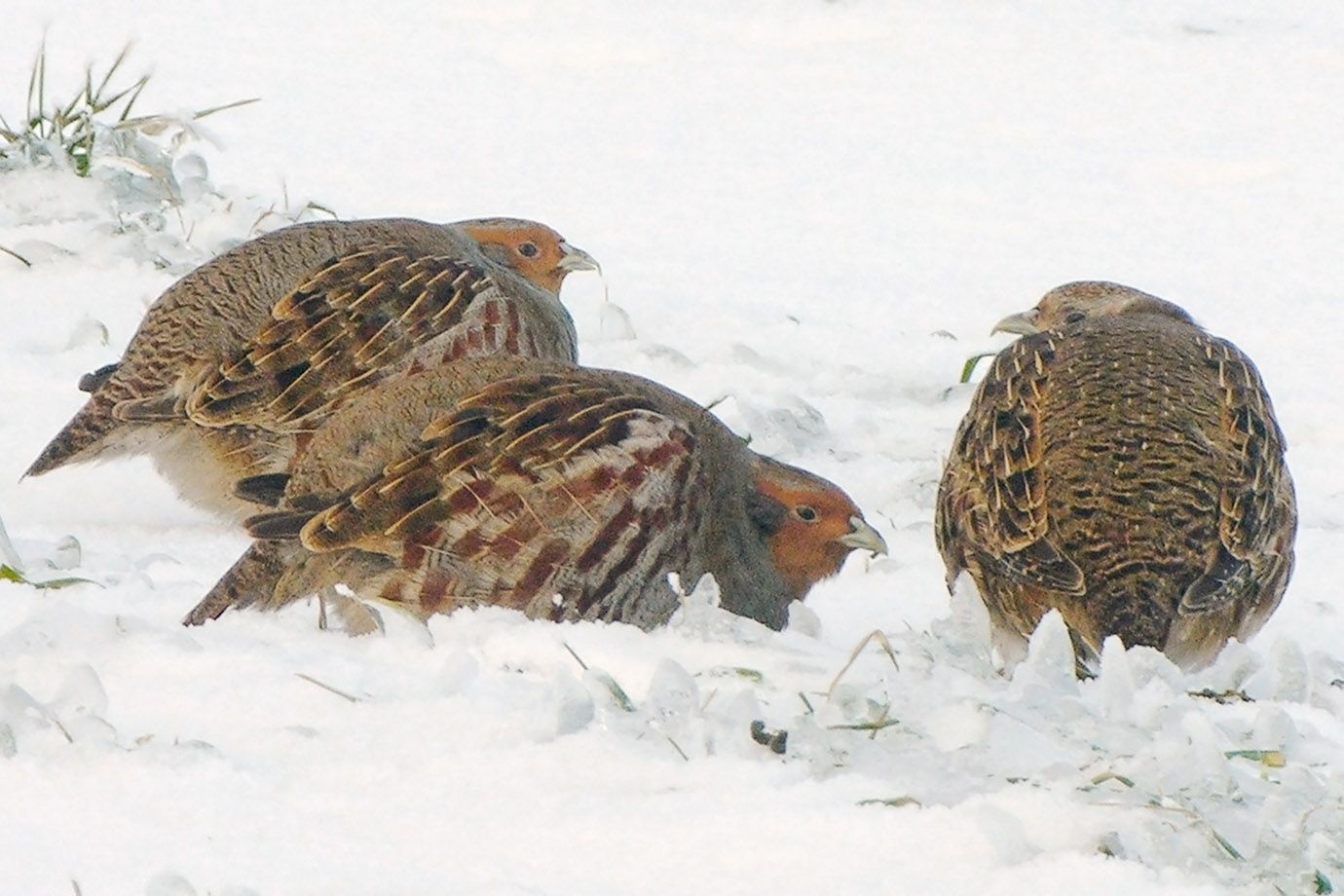
Grey Partridge
The Grey Partridge, Perdix perdix, is a gamebird in the pheasant family Phasianidae of the order Galliformes, gallinaceous birds. The species has been successfully introduced to many parts of the world, including vast areas of North America, where it is most commonly known as Hungarian partridge, or just "Hun".
Widespread and common throughout its large range, the Grey Partridge is evaluated as Least Concern on the IUCN Red List of Threatened Species. This partridge breeds on farmland across most of Europe into western Asia, and has been introduced widely into North America. They are quite common in some areas of southern Canada and the northern United States.
Hens lay up to twenty eggs in a ground nest. The nest is usually in the margin of a cereal field, most commonly Winter wheat. The only major and constant difference between the sexes is the so-called cross of Lorraine on the tertiary coverts of females – these being marked with two transverse bars, as opposed to the one in males. These are present after around 16 weeks of age when the birds have moulted into adult plumage. Young Grey Partridges are mostly yellow-brown and lack the distinctive face and underpart markings. They are a seed-eating species. They are also a non-migratory terrestrial species, and form flocks outside the breeding season.
Source: en.wikipedia.org/wiki/Grey_Partridge - 30.12.08
Grey Partridge
In our culture we human beings only halfway realise the winter. For these Grey Partridges and other wild animals this still looks different.







